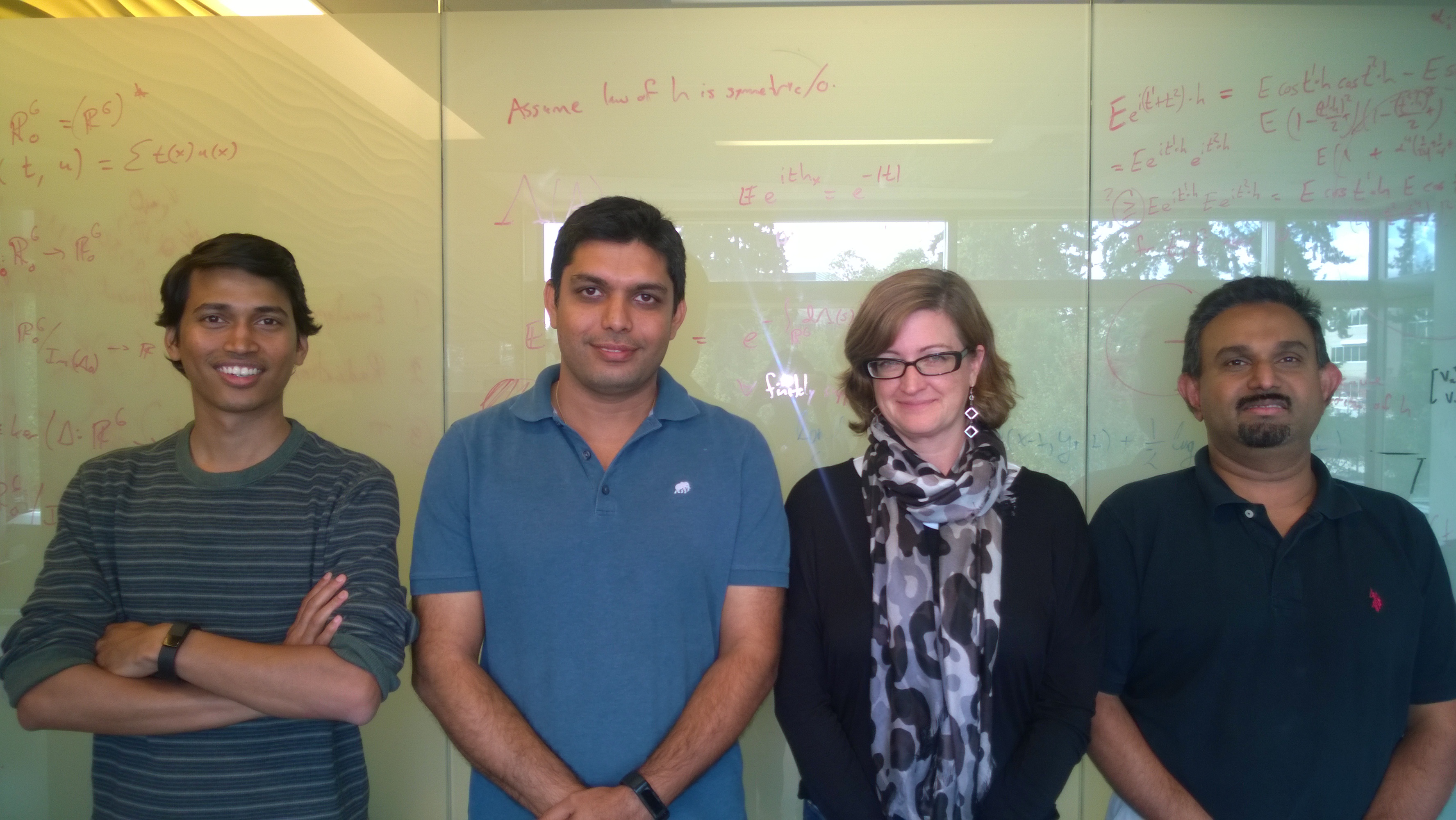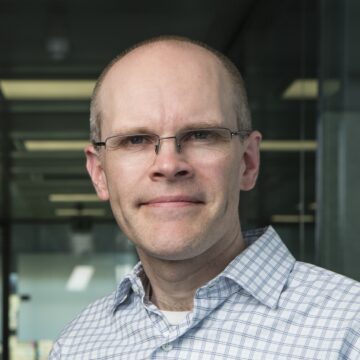Mobile & Internet of Things (IoT) devices, along with other battery operated devices, are energy constrained. While hardware capabilities have increased tremendously over the last ten years, battery energy density has only doubled. In this project we are exploring several techniques to extend the battery life of mobile and IoT devices.
Our work spans innovation across all layers of the battery stack – from new battery chemistries to power management hardware, from device drivers and operating system abstractions to the energy-efficient apps that run on the device. We work closely with product teams across Microsoft including the Windows, Surface and HoloLens teams which provides a very real context for our longer-term research agenda which aims to change the way we think about batteries.
Highlights
- November 2017: Read about SDB implementation in Windows here
- SDB covered by the press (MIT Technology Review, The Register, Yahoo Finance)
- Microsoft Research blog on Software Defined Batteries (Article)
- WearDrive wins Best Paper Award at USENIX ATC 2015 (Press Article)
- SDB paper was accepted for inclusion at SOSP 2015
- Paper on reducing energy consumed by Wi-Fi accepted in UbiComp 2015
- WearDrive paper was accepted for publication at USENIX ATC 2015
- Wireless Display energy consumption paper accepted to MobiSys 2015
- ComputerWorld highlights our energy work at MSR (Press Article)
- XBOX One wireless controllers are most energy efficient game controllers in the market!
- Visual Studio tool for estimating energy consumption by apps highlighted by Steve Ballmer in 2013 Build Keynote (around 45th minute)
-
Research
While we continue to make Microsoft products energy efficient by designing and incorporating new energy saving techniques, we are also inventing fundamentally new technologies with a view to achieving the next breakthrough in mobile device and wireless sensor battery life.
Offload: We have developed techniques which allow a system to dynamically move computation, storage and/or networking operations to a more energy efficient component of a system. This could be a lower power processor on the phone, or a less battery constrained device, such as a router, nearby PC, or the cloud. We have developed techniques to offload storage (WearDrive), and computation to a low-power processor (Somniloquy, LittleRock), or to a nearby PC or cloud (MAUI).
Software Defined Batteries: Different battery chemistries perform better on different axes such as: energy density, cost, peak power, recharge time, longevity and efficiency. Mobile system designers are constrained by existing technology, and are forced to select a single chemistry that best meets their diverse needs, compromising other desirable features. We have developed a new hardware-software system called the Software Defined Battery (SDB) that allows system designers to integrate batteries of different chemistries. SDB exposes APIs to the operating system to control the amount of charge flowing in and out of each battery enabling it to dynamically trade one battery property for another.
Technology Transfers
Low Energy Wi-Fi (2012) – Windows 8, and later versionsIncreases battery lifetime in Windows 8 Tablets and Surface computers.
Compared to laptops the new class of mobile devices, such as tablets and Surface computers, need to stay connected even when the screen is turned off. Keeping the Wi-Fi always on consumes significant energy. We designed a set of techniques that allows the Wi-Fi device to not lose its connection even when the screen is turned off and the processor (and SoC) is in a low power state. We accomplished this by reducing the Wi-Fi power consumption to a few mW in standby state. Our techniques shipped in Windows 8, and later versions of Windows.
Visual Studio Energy Modeler & Profiler (2012) – Windows Phone 8 Dev ToolsEnables mobile app developers to estimate the energy consumption of their apps
Poorly written apps are one of the primary reasons for high energy drain on mobile devices. One reason for energy-inefficient apps is that app developers do not have sufficient tools to determine the energy impact of their apps. As part of a Wattson research project we designed a Visual Studio plug-in that provides visibility to the application developer of their application’s energy consumption. Our paper Empowering Developers to Estimate App Energy Consumption, published in ACM MobiCom 2012 describes the details of the system. This work formed the basis for the Energy Profiler that is part of the Visual Studio SDK for Windows Phone 8.
Visual Studio 2013 Energy Profiler (2013) – Diagnostics & Performance Toolbox for Windows 8.1Enables app developers to estimate the energy consumption of their apps
Described here, and also showcased in Steve Ballmer’s Build Keynote (around 45th minute). Our research paper Empowering Developers to Estimate App Energy Consumption, published in ACM MobiCom 2012 describes the details of the system.
XBOX One Wireless Controller Protocol (2013)The wireless protocol between the XBOX One controller and console
Designed the low-energy, high-throughput, low-latency wireless protocol for the XBOX One. Research and industry has always focused on getting higher throughput. However, little prior work, if any, looks at achieving high throughput while achieving low (guaranteed) latency, and consuming less energy. For the XBOX One we designed a protocol that achieves both. I enjoyed being deeply involved with the design, development, and testing of the controllers.
-
Press
- Microsoft has a crazy plan to make your batteries last a lot longer, Matt Weinberger, Business Insider, October 4, 2015
- Gadgets Could Get Longer Lives by Combining Batteries, Tom Simonite, MIT Technology Review, October 5, 2015
- A laptop battery system that knows your habits and lasts a lot longer, Allison Linn, Next at Microsoft, October 2, 2015 (also on Slashdot)
- Using WearDrive, Microsoft researchers tripled wearable battery life, Vlad Dudau, Neowin, July 9, 2015
- Microsoft researchers have developed a way to make wearables last longer, Allison Linn, Inside Microsoft Research, TechNet, July 9, 2015
- Making mobile phones more useful, and addictive, Allison Linn, Inside Microsoft Research, TechNet, May 19, 2015
- Power up! The hunt is on to extend battery life for mobile devices, Sandra Gittlen, ComputerWorld, January 19, 2015
- Microsoft Aims for Smartphones that Run for a Week, Tom Simonite, MIT Technology Review, June 8, 2014
- Microsoft Planning 7 Day Phone Batteries, Mitch Wagner, LightReading, June 10, 2014
- Making mobile storage energy efficient, Robin Harris, ZDNet, February 19, 2014
- The surprise power hog for mobile storage: software, Stephen Lawson, Network World, February 19, 2014
- The surprise power hog for mobile storage: software, PC World, February 19, 2014
- Microsoft Research doesn’t want you to plug your phone in for a week, Rich Edmonds, WPCentral, January 29, 2014
- Microsoft Research’s Ambitious Goal Is To Have A Smartphone That Can Last Up To 7 Days In Single Charge, Pradeep, WMPowerUser, January 29, 2014
- Microsoft To Develop Long-Lasting Smartphone, Tyler Lee, January 29, 2014
- Making Computers Talk in their Sleep, Will Knight, MIT’s Technology Review, August 18, 2009
- Microsoft, UC San Diego want your PCs to talk in their sleep, Alpha Doggs, NetworkWorld, April 27, 2009 (also featured in NetworkWorld’s 20 kick-ass projects)
- ‘Sleep talking’ PCs save energy and money, PHYSORG.com, April 24, 2009 (also on Science Daily, May 1, 2009)
- As Economy Softens, Microsoft Ramps up Research, Jeremy Kirk, PC World, May 7, 2009
-
Talks
- Invited Talk, Future of Distributed Computing, Ithaca, NY, October 2015, “Towards 7X Improvement in Battery Life of Mobile Devices”
- Invited Spotlight Talk, MIT Technology Review Digital Summit, San Francisco, June 2014, “Powering our Digital Lives” (video)
- Keynote, ACM Workshop on Power-Aware Computing and Systems (HotPower), collocated with SOSP 2013 at Nemacolin, November 2013, “Towards 7X Improvement in Battery Life of Mobile Devices”
- Imperial College Energy and Performance Colloquium, May 2012, “Intelligent Offload to Improve Battery Lifetime of Mobile Devices”
-
People

Left to Right (Anirudh Badam, Ranveer Chandra, Julia Meinershegan, Bodhi Priyantha)
Not in picture:
- Steve Hodges, Thomas Moscibroda, Jon Dutra, Aman Kansal, Eric Horvitz
Interns
- Xia Zhou (2011, UCSB, now Dartmouth): Worked on low power Wi-Fi (Shipped features in Windows 8, 8.1, and 10)
- Apurv Bhartia (2011, UT Austin, Now Meraki): Low power Wi-Fi Display
- Parya Moinzadeh (2012, UIUC, now Google): Software Defined Batteries & e-Loupe
- Pan Hu: (2014, UMass): SDB Hardware
- Tony Ferresse (2014, UC Berkeley, Now Tesla): SDB Batteries & Simulations
- Valia Skiani (2014, Columbia): SDB Algorithms
- Jing Li (2013, UCSD): Energy consumed by storage
- Jian Huang (2014, Georgia Tech): WearDrive
- Christopher Dekmezian (2015, UC Berkeley): New dynamic batteries
人员
Ranveer Chandra
Managing Director, Research for Industry
Bodhi Priyantha
Researcher
Thomas Moscibroda
Distinguished Engineer Azure Core Platform Capacity & Efficiency Microsoft Azure
Steve Hodges
Senior Principal Researcher
Riyaz Pishori
Principal Research PM

